Scientific name Rutaceae | ||
 | ||
Lower classifications | ||
Rutaceae or the citrus family
The Rutaceae are a family, commonly known as the rue or Citrus family, of flowering plants, usually placed in the order Sapindales.
Contents
- Rutaceae or the citrus family
- Taxonomy and diversity of rutaceae
- Characteristics
- Classification
- Notable species
- References
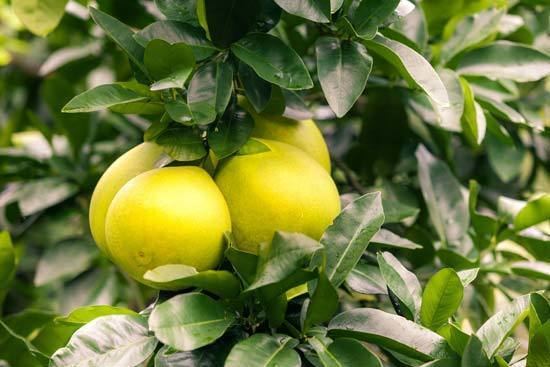
Species of the family generally have flowers that divide into four or five parts, usually with strong scents. They range in form and size from herbs to shrubs and small trees.
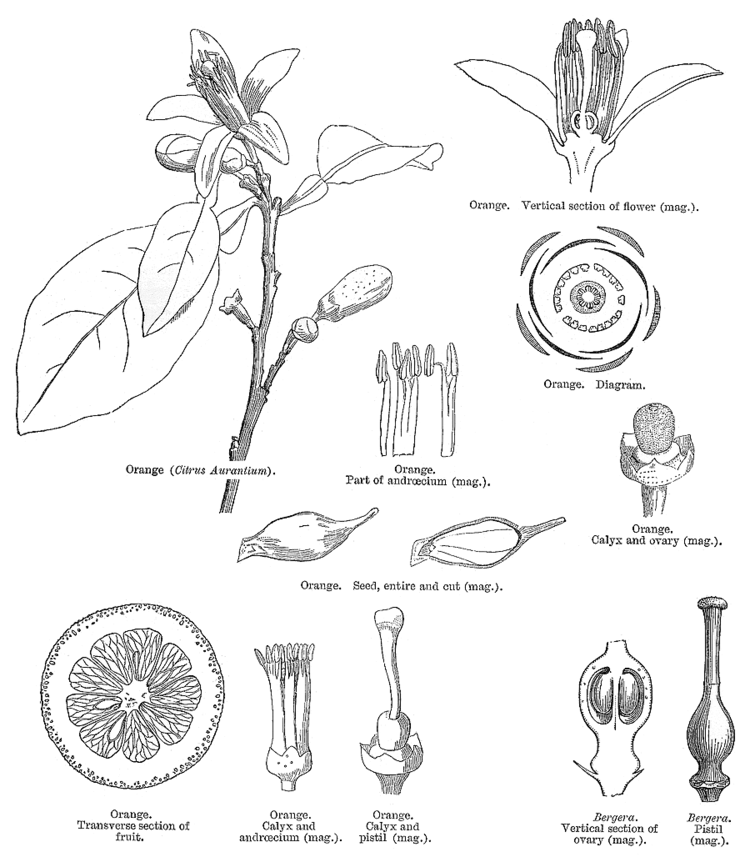
The most economically important genus in the family is Citrus, which includes the orange (C. × sinensis), lemon (C. × limon), grapefruit (C. × paradisi), and lime (various, mostly C. aurantifolia, the key lime). Boronia is a large Australian genus, some members of which are plants with highly fragrant flowers and are used in commercial oil production. Other large genera include Zanthoxylum, Melicope, and Agathosma. About 160 genera are in the family Rutaceae: List of Rutaceae genera.
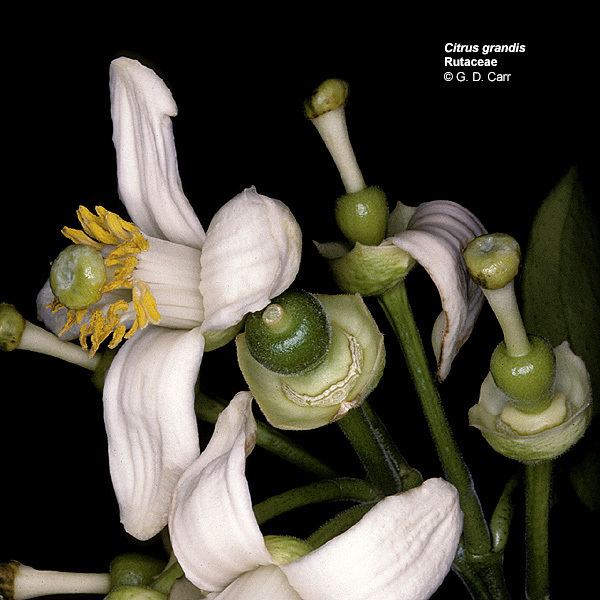
Taxonomy and diversity of rutaceae
Characteristics
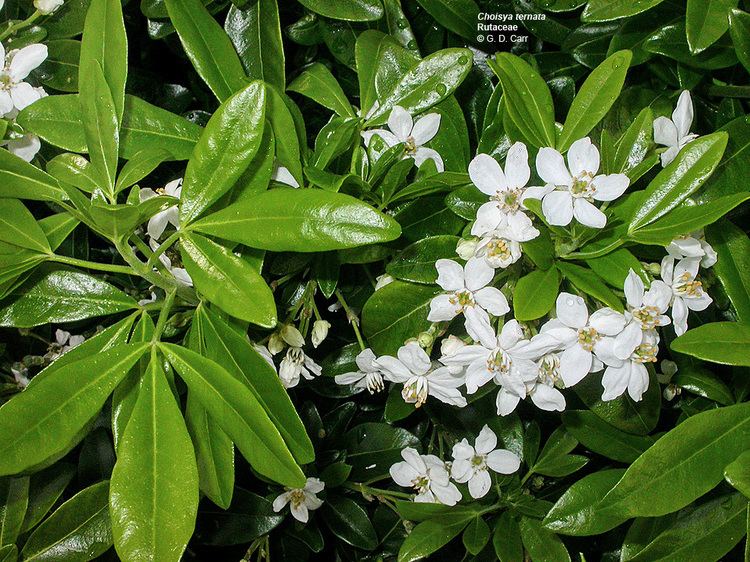
Most species are trees or shrubs, a few are herbs (Boenninghausenia and Dictamnus), frequently aromatic with glands on the leaves, sometimes with thorns. The leaves are usually opposed and compound, and without stipules. Pellucid glands, a type of oil gland, are found in the leaves responsible for the aromatic smell of the family's members; traditionally they have been the primary synapomorphic characteristic to identify the Rutaceae.
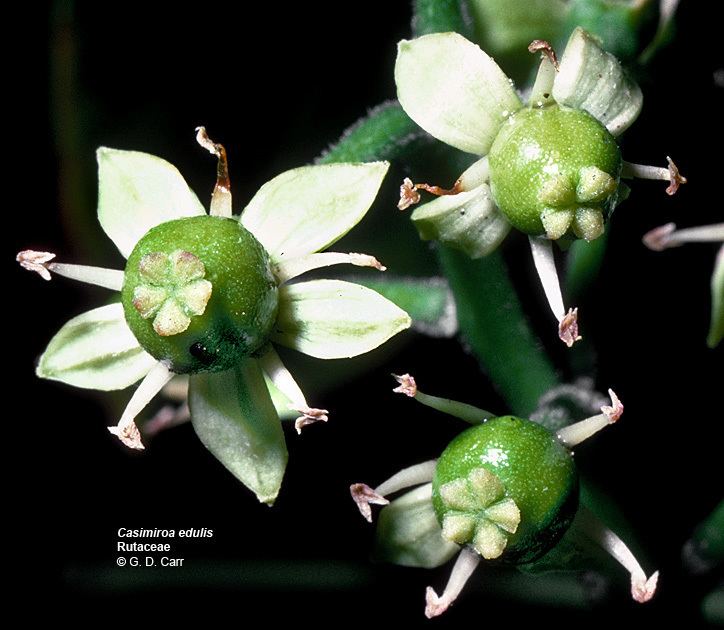
Flowers are bractless, solitary or in cyme, rarely in raceme, and mainly pollinated by insects. They are radially or (rarely) laterally symmetric, and generally hermaphroditic. They have four or five petals and sepals, sometimes three, mostly separate, eight to ten stamen (five in Skimmia, many in Citrus), usually separate or in several groups. Usually a single stigma with 2 to 5 united carpels, sometimes ovaries separate but styles combined.
The fruit of the Rutaceae are very variable: berries, drupes, hesperidia, samaras, capsules, and follicles all occur. Seed number also varies widely.
Classification
The family is closely related to the Sapindaceae, Simaroubaceae, and Meliaceae, and all are usually placed into the same order, although some systems separate that order into Rutales and Sapindales. The families Flindersiaceae and Ptaeroxylaceae are sometimes kept separate, but nowadays generally are placed in the Rutaceae, as are the former Cneoraceae. The subfamilial organization has not been fully resolved, but the subfamily Aurantioideae (=Citroideae) is well supported; the placement of several genera remains unclear.
Notable species
The family is of great economic importance in warm temperate and sub-tropical climates for its numerous edible fruits of the Citrus genus, such as the orange, lemon, calamansi, lime, kumquat, mandarin and grapefruit. Non-citrus fruits include the white sapote (Casimiroa edulis), Orangeberry (Glycosmis pentaphylla), Clymenia (Clymenia polyandra), Limeberry (Triphasia trifolia), and the Bael (Aegle marmelos). Other plants are grown in horticulture: Murraya and Skimmia species, for example. Ruta, Zanthoxylum and Casimiroa species are medicinals. Several plants are also used by the perfume industry, such as the Western Australian Boronia megastigma.
The genus Pilocarpus has species (P. jaborandi, and P. microphyllus from Brazil, and P. pennatifolius from Paraguay) from which the medicine pilocarpine, used to treat glaucoma, is extracted.
Spices are made from a number of species in the genus Zanthoxylum, notably Sichuan pepper.
